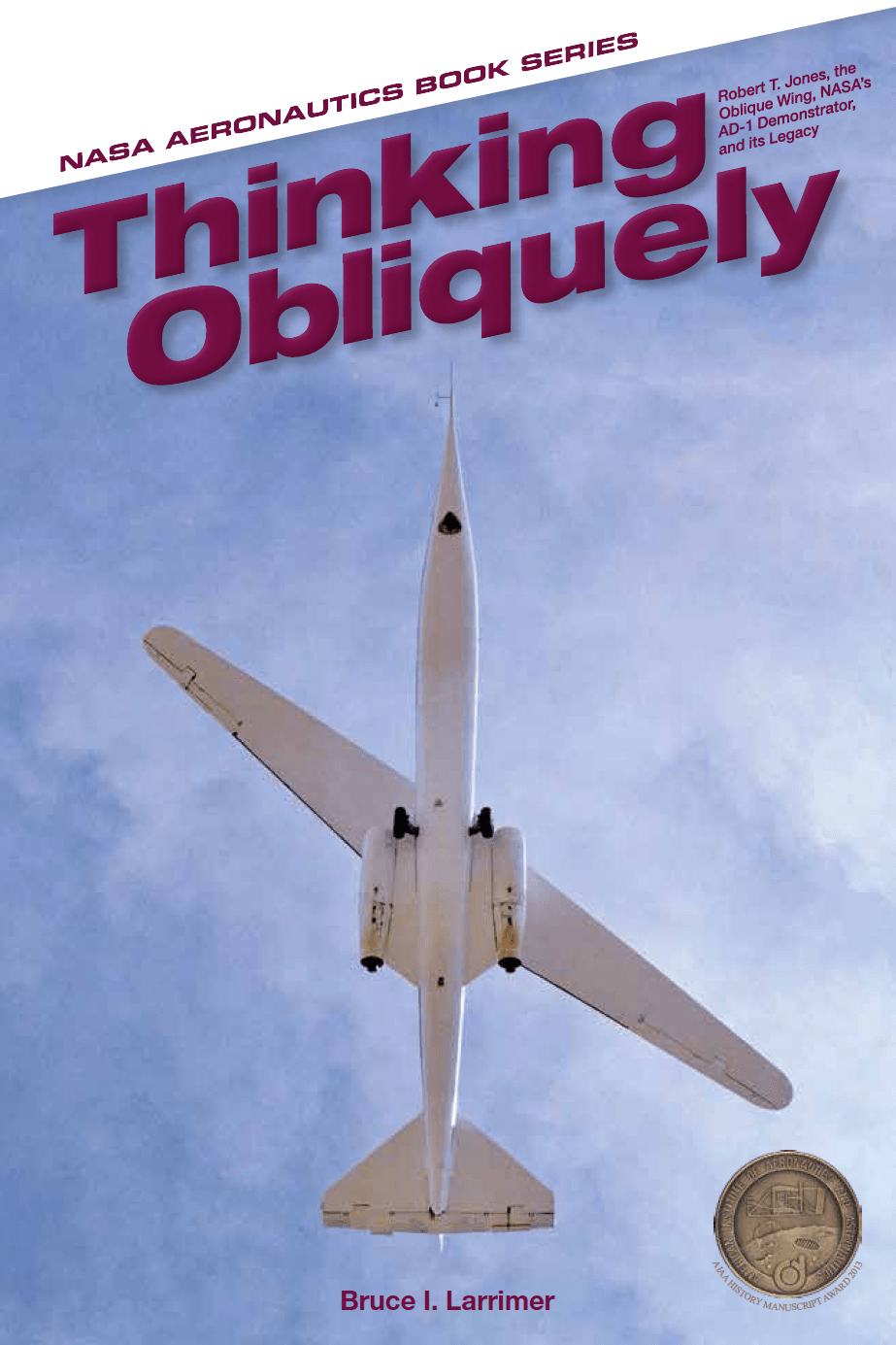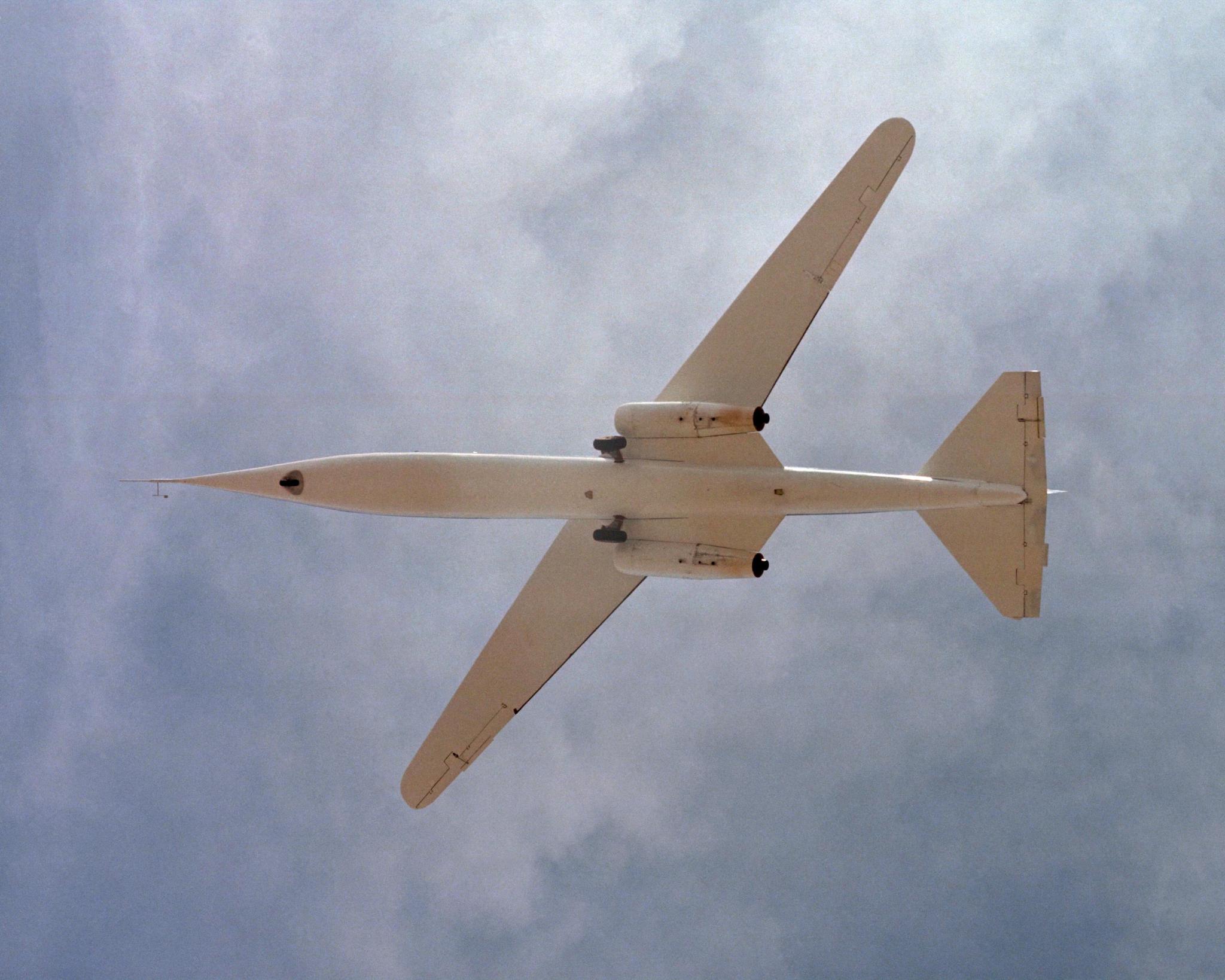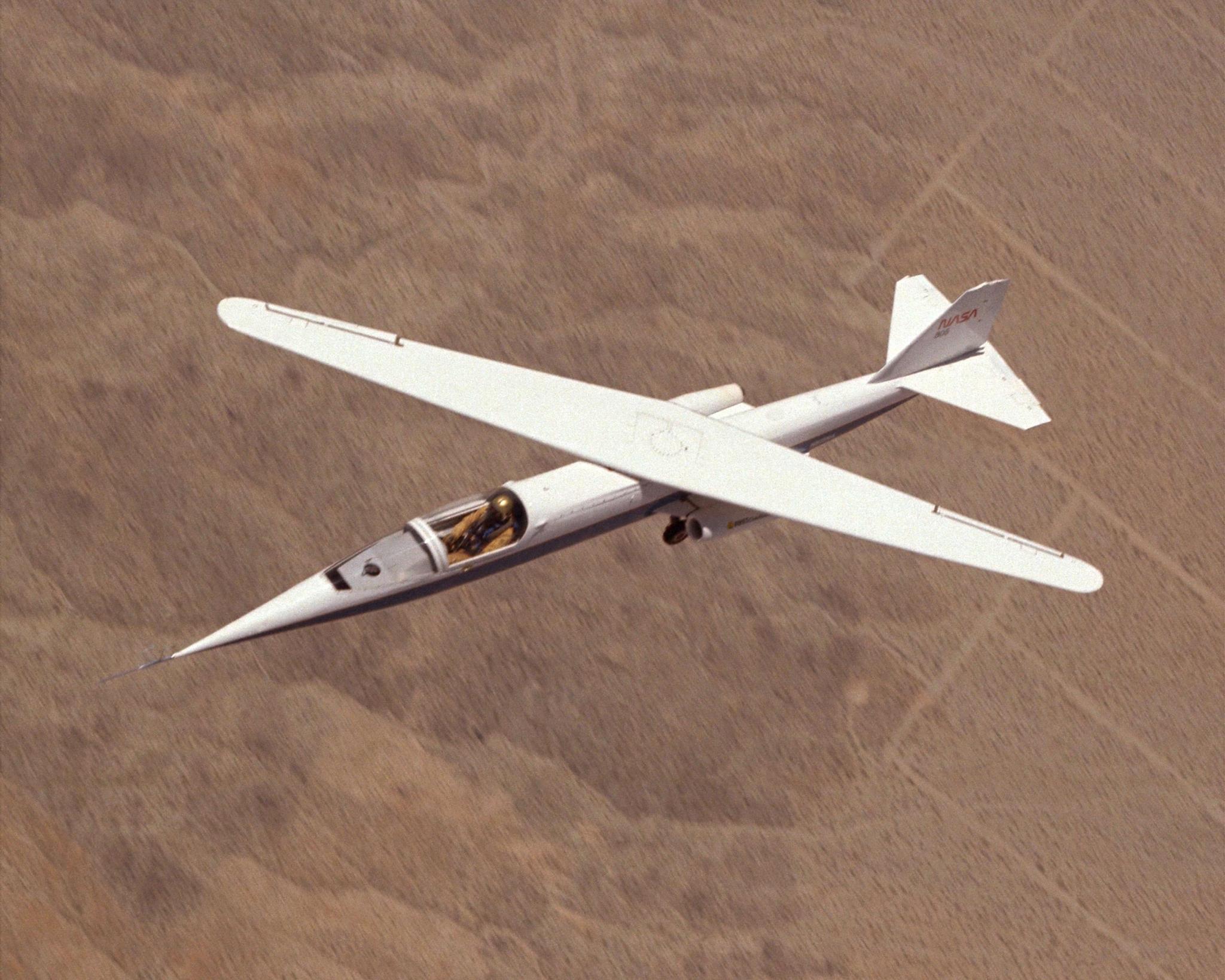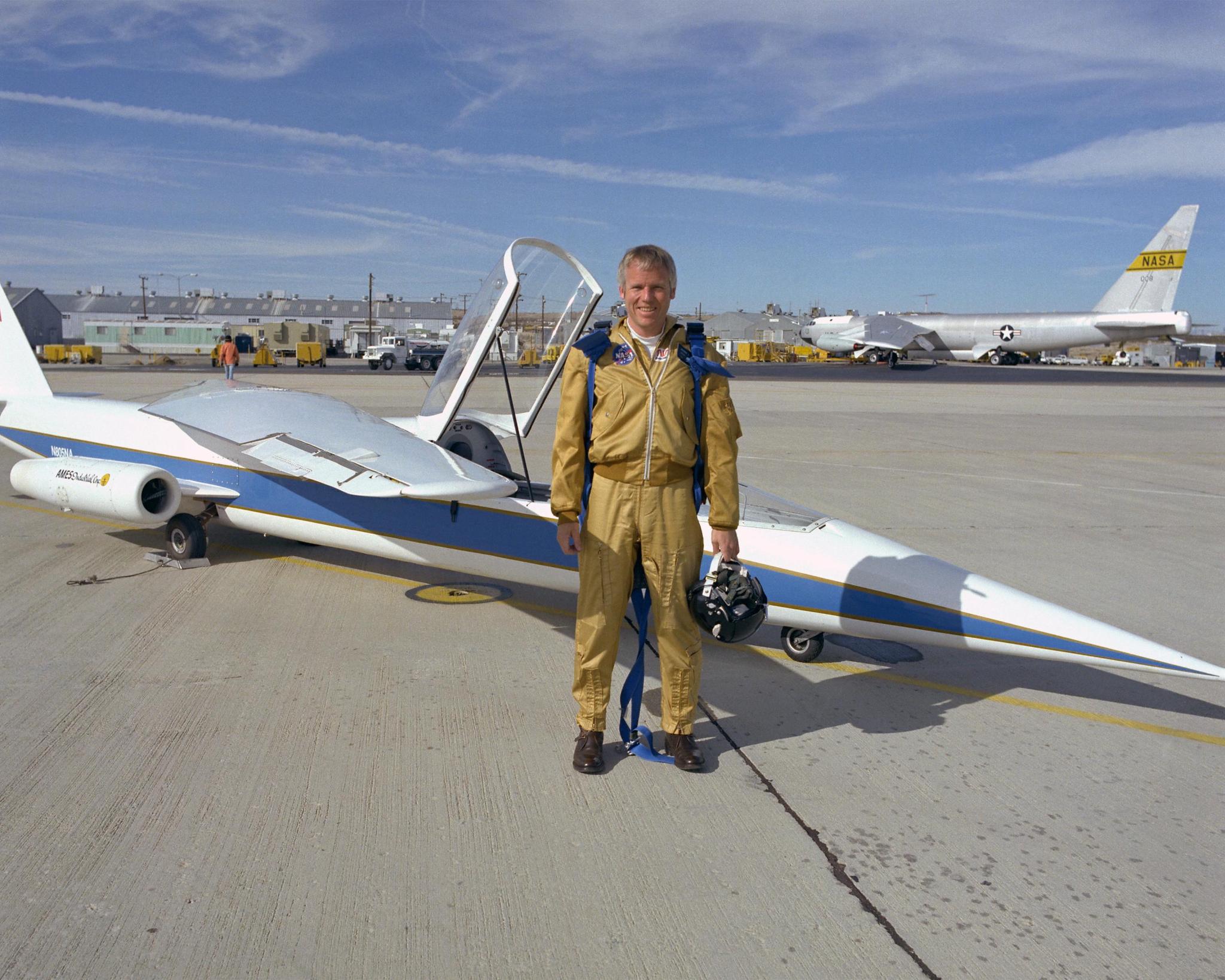
They called it the “scissors wing” airplane and it could cut through the air as smoothly as a warm knife slices through a cold stick of butter.
The clever moniker was inspired by the fact that the wing of NASA’s Ames Dryden-1 (AD-1) research aircraft could obliquely pivot during flight atop the main fuselage by as much as 60 degrees.
It was thought the feature might improve a future aircraft’s aerodynamic efficiency as it flew at either subsonic or supersonic speeds.
And it worked.
Seventy-nine test flights of the small subsonic, jet-powered aircraft conducted between 1979 and 1982 over NASA’s Dryden Flight Research Center at Edwards Air Force Base, Calif., proved it.
The complete story of this most unusual airplane is told in “Thinking Obliquely: Robert T. Jones, the Oblique Wing, NASA’s AD-1 Demonstrator, and its Legacy,” one of NASA’s newest additions to its aeronautics book series.

“Thinking Obliquely,” a 269-page book written by Bruce I. Larrimer, is available online at no cost as an e-book, while printed versions of the book may be purchased from NASA’s Information Center.
Notably, the book pays tribute to Robert T. Jones, an aeronautical engineer who pioneered the idea in the United States that straight wings would work best for aircraft flying at slower speeds, while swept back wings would be more ideal at faster speeds.
“Had it not been for the brilliant genius and remarkable contributions that R.T. Jones brought to aviation, the AD-1 would not have happened so I wanted to make sure that his story was included in this book,” Larrimer said.
The oblique wing AD-1 aircraft, which Jones proposed and helped design and test in wind tunnels, combined the concepts of straight wing and swept wing designs into a single scheme, which was later validated by the flight tests.
Although the AD-1 could only be flown at subsonic speeds, the idea behind using an oblique wing on a future aircraft was that at lower speeds, during takeoffs and landings, the wing would be perpendicular to the fuselage like normal.
This would provide maximum lift and control qualities for the aircraft.
But then as the aircraft gained speed, the wing would be pivoted to increase the oblique angle, reducing drag and decreasing fuel consumption as a result.

At higher cruise speeds, both subsonic and supersonic, the wing would be pivoted by up to a 60-degree angle in relation to the aircraft’s fuselage for better high-speed performance.
“Thinking Obliquely” details the sometimes complex aerodynamics and engineering behind the concept in general, and the effort to build and put the AD-1 through its paces in particular.
The book also touches on a sort of evolution of the ideas behind the oblique wing, which is the development and potential uses of a flying wing beyond the B-2 bomber, which most are familiar with, to include using an oblique flying wing design as a supersonic transport.
Author Larrimer concludes the book by lamenting that despite the promise of the benefits of the oblique wing, and the proof of its efficiencies displayed by the AD-1 demonstrator, the aviation community hasn’t more fully embraced the idea in future airplane designs.
Yet he remains optimistic.
“That oblique wing vehicles will fly is not in doubt,” Larrimer wrote. “The only question is when.”

Publication of “Thinking Obliquely” was sponsored and funded by the communications and education department of NASA’s Aeronautics Research Mission Directorate.
The American Institute of Aeronautics and Astronautics recognized the book with its prestigious History Manuscript Award for 2013.
NASA Information Center
(scroll down to “Aeronautical Publications Available for Purchase”)































